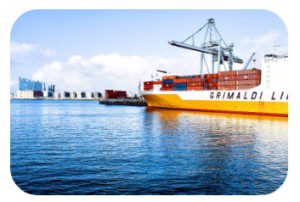 For centuries, ships used wind-catching sails to travel all over the world. Then the steam engine arrived during the industrial age and changed maritime transportation forever. Of course, the massive engines in today’s vessels rely on petroleum for power, presenting a number of potential problems. Along with environmental issues, big tankers also cost a fortune to fuel. For instance, the Danish shipping firm Maersk Group spends $2.1 billion per year on fuel costs.
For centuries, ships used wind-catching sails to travel all over the world. Then the steam engine arrived during the industrial age and changed maritime transportation forever. Of course, the massive engines in today’s vessels rely on petroleum for power, presenting a number of potential problems. Along with environmental issues, big tankers also cost a fortune to fuel. For instance, the Danish shipping firm Maersk Group spends $2.1 billion per year on fuel costs.
To reduce this enormous expense, the company is experimenting with a high-tech twist on an ancient method. Starting this month, one of Maersk’s ships will be equipped with 100-foot-tall rotating cylinders that act as sails. These lightweight but towering structures create energy through the “Magnus effect,” a process in which a spinning object generates force by shifting air pressure. According to company representatives, this method could reduce fuel costs by as much as 10 percent.
While Maersk has tried other types of petroleum-free power in the past, these techniques either cost too much to install or didn’t provide enough fuel savings. If this cylinder-sail experiment works, the company could expand the practice to its entire fleet. Still, cylinder-equipped ships will need strong winds in order to create enough power. So while high-tech sails may be able provide additional energy for large ships, they’re unlikely to replace petroleum engines anytime soon.
Questions:
- Should other shipping companies follow Maersk’s lead and start experimenting with cylinder sails?
- Do you think high-tech wind power can eventually replace petroleum engines on large shipping tankers? What sort of things can companies do to make this a reality?
Source: Costas Paris, “The Next Innovation in Shipping: Wind Power,” The Wall Street Journal, March 15, 2017.
